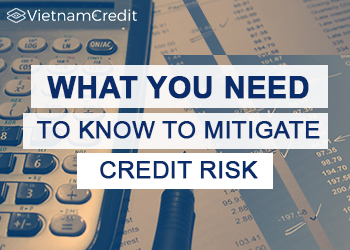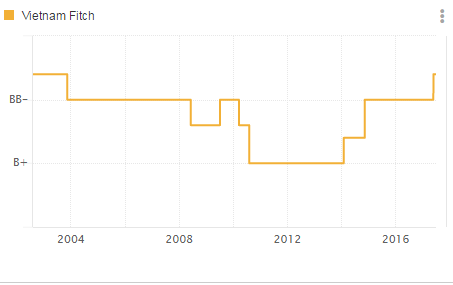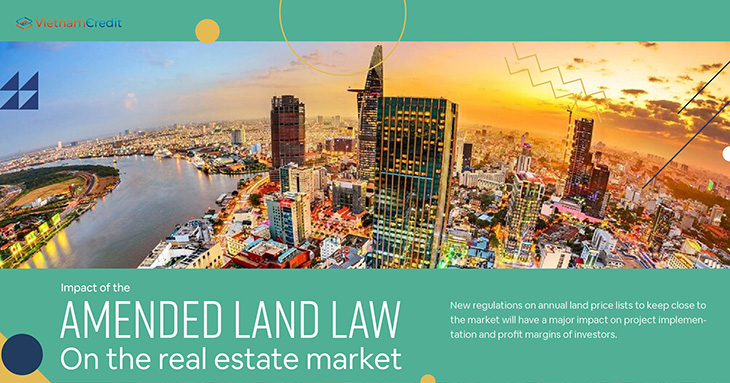Commercial credit is based on the principle of trust, which poses potential risks of bad debt. Taking part in the commercial credit insurance industry, VietnamCredit has pointed out some questions for sellers to mitigate commercial credit risk
Commercial credit is an agreement between one trader and another which allows the exchange of goods and services without any immediate payment. Commercial credit is commonly used by business organizations as a source of short-term financing.
Carrying out the seller function in the supply chain, you will always have this question in your mind, "Should commercial credit be granted to Distributor A? How much should commercial credit be given to my distributors? How can I increase commercial credit for Distributor B to maximize profit without risk? "
Commercial credit is based on the principle of trust, which poses potential risks of bad debt. Taking part in the commercial credit insurance industry, VietnamCredit has pointed out some questions for sellers to mitigate commercial credit risk:
-
Do your customers have regular and stable transactions with your company? How much do they contribute to your sales?
Customers with regular and stable payments pose fewer risks than new ones or those with irregular and unstable payments.
-
Competition level or opportunity in the market, actual state of the industry?
The position of a company within the industry is an important factor affecting their credit limit. Therefore, 5Fs model should be adapted:
- Is there any marketing strategy or effective response to the competition over the past 3 years? Case studies of competitors such as Sam Sung vs. Apple; Pepsi vs Cocacola; Tan Hiep Phat vs URC; Mansan with traditional fish sauce manufacturers ... should be studied.
- Is there a market downturn, with no positive signals? For example, the retail sector is promising to develop despite a slow down while other industries causing environmental pollution, energy consumption ... are again in recession and have no signs of recovery.
- Problems of inventory overload and product depreciation due to market fluctuations while companies have not found solutions to bring the goods to the market.
-
Business experience, reputation in the market, etc?
The management system or the board of directors is changed frequently. Members of the executive board have a difference of opinion with each other. No long-term development strategy also increases the risk of commercial credit risk.
Credit limit of enterprises applying backward business models with no signs of improvement should be reduced
-
The financial strength of the business (information available from the business or other sources)?
Net Asset Value vs. Proposed Credit Limit:
The first thing that a seller should do when granting credit limit to a buyer is comparing of the limit offered with their net worth.
If the net asset value is higher than the proposed credit limit, the likelihood of commercial credit risk is low. In contrast, if the net asset value is less than or equal to the credit limit, commercial credit may happen.
Defensive interval ratio:
The defensive interval ratio (DIR), also called the defensive interval period (DIP) or basic defense interval (BDI), is a financial metric that indicates the number of days that a company can operate without needing to access noncurrent assets, long-term assets whose full value cannot be obtained within the current accounting year, or additional outside financial resources.
Diminishing DIR reflects reflecting an increase in credit risk and a decrease in credit limit.
Operating Cash Flow
In the cash flow statement, operating cash flow are deducted from dividends paid during the year. If the result is positive and commercial credit should be given. However, cash flow to pay dividends may come from borrowing sources, so it is necessary to consider carefully before making decisions on credit limit.
-
Determine the working capital needed (real debt demand)?
Working capital, also known as net working capital, is the difference between a company’s current assets, like cash, accounts receivable (customers’ unpaid bills) and inventories of raw materials and finished goods, and its current liabilities, like accounts payable.
Working Capital = Current Assets - Current Liabilities
After identifying the demand for working capital, it is necessary to compare the credit limit given by the bank with other sources to determine the amount of capital needed by the business from suppliers.
-
Length of maturity?
Days payable outstanding (DPO) is a company's average payable period that measures how long it takes a company to pay its invoices from trade creditors, such as suppliers. The formula to calculate days payable outstanding is:
.jpg)
- If the length of maturity is shorter than DOP (30 days for example), trade credit will be given.
- The length of the maturity period is longer than DOP 150% (eg 45 days) credit limit will be lower.
- If the payment period is longer than 45 days, the commercial credit limit will be very low.
Company reports provided by VietnamCredit are considered as a basis for corporate clients and insurers to grant credit lines, raise credit lines, lower credit lines or refuse commercial credit for their Vietnamese partners.
Company reports provide the most up-to-date information on: basic information, legal information, owner information, credit information, payment history, import-export activities, business activities, which help businesses understand their partners, customers and competitors thoroughly to negotiate and cooperate more effectively.


.jpg)
.jpg)





















































